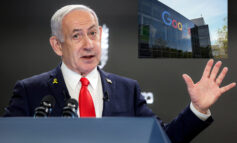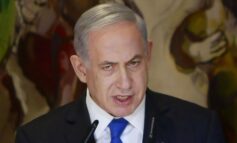Israel openly declares its continued occupation of south Lebanon and Syria with “American blessing”
As Israel admitted to a “total failure” in preventing Hamas’ October 7, 2023 attack on southern Israeli settlements, and as its more than 14-month-long war on Gaza and South Lebanon has failed to achieve its objectives — rather exacerbating internal divisions within Benjamin Netanyahu’s government and among settlers — Netanyahu and his team continue their war policies with even greater determination.
He has threatened that “Israel is ready to resume fighting in Gaza at any moment”, vowing to “achieve the war’s objectives, whether through negotiations or by other means.”
From Lebanon to Syria, and at the heart of it, Palestine — including Gaza and the West Bank — Israeli aggression persists, emboldened by explicit American support at the highest level, with an audacity that borders on shamelessness in declaring its intentions and goals.
The ceasefire agreement in Gaza, both in its first and second phases, remains subject to disputes and uncertainty. Israel openly asserts its right to resume the war if Hamas does not comply with the condition of disarming and expelling its leaders, along with Islamic Jihad leaders, from Gaza.
Southern Syria has become a constant target of Israeli attacks. Defense Minister Israel Katz stated their goal bluntly: “We want to demilitarize southern Syria.” His message was clear: “We will not allow southern Syria to become another South Lebanon.” Meanwhile, Netanyahu demanded the removal of the “new regime’s forces” from southern Syria, emphasizing that Tel Aviv “will not allow the Syrian new regime’s forces to spread south of Damascus.”
“We will not allow (Hayat Tahrir al-Sham) or the new Syrian army to enter the area south of Damascus, and we demand the removal of all weapons from Quneitra, Daraa and As-Suwayda, and the prevention of the new regime’s forces from entering,” Netanyahu said.
Israel did not stop at Netanyahu’s statements, but escalated its rhetoric towards the government in Damascus, labeling it as “an Islamic jihadist group from Idlib that took control of Damascus by force.”
This came from Israeli Foreign Minister Gideon Sa’ar on February 24.
“I hear talk about a transfer of power in Syria, and for me, this is absurd,” he said.
The Israeli statements, coupled with the continuous incursions into southern Syrian territory, sparked anger in the Syrian street, prompting protests on February 24 and 25, which included calls for a response to Israel and demands for its unconditional withdrawal, in addition to adhering to the 1974 disengagement agreement.
Hezbollah stages show of strength at Nasrallah’s funeral
On Sunday, Hezbollah put on a show of strength with an elaborate and sprawling funeral for its assassinated leader, Sayyed Hassan Nasrallah, an event the group used to revive its battered image in Lebanon after the latest war with Israel.
Hundreds of thousands of people from across Lebanon and the region flocked to the capital, Beirut, for the service, which was held at a large sports stadium on the outskirts of the city. Tens of thousands packed into the arena, while others spilled out onto the streets, many carrying pictures of Nasrallah and waving large Hezbollah flags. Agence France Presse estimated there were more than 1,400,000 participants.
When a truck carrying Nasrallah’s coffin entered the stadium, the crowd erupted in shrieks and cries as the voice of the former Hezbollah leader — clipped from his speeches — echoed from speakers. Some people tossed scarves toward the vehicle, wiping away tears. Others chanted, “We are at your service, Nasrallah!”
The “massive crowd in Lebanon is an expression of loyalty to the resistance,” Hezbollah’s current leader, Sheikh Naim Qassem, said in a video speech played in the stadium.
“The resistance endures and remains present, regardless of what you may think,” he added. “Do not mistake our patience for weakness.
“We are in a new phase,” Qassem added. “Resistance is fundamental and we will participate in state-building of our nation.”
The funeral comes five months after Israel assassinated Nasrallah on Sept. 27, dropping 84 tons of bombs over several minutes on his bunker just south of Beirut.
Hezbollah and Israel agreed to a November cease-fire that forced Hezbollah to withdraw from southern Lebanon and abandon its strongholds along the border with Israel. While Israel agreed to withdraw from Lebanon as part of that truce, Israeli forces have remained in parts of southern Lebanon past the deadline to do so.
Continuing Israeli aggression on Lebanon
Over the past week, Israeli airstrikes have not ceased. On Thursday night, an Israeli drone struck a building in Deir Qanoun Al-Nahr, near the tomb of Hashem Safieddine. Other raids targeted Hermel, Baalbek and southern Lebanon, with the most intense attacks occurring during Nasrallah’s funeral.
Israel’s war minister Gallant confirmed receiving U.S. approval to keep Israeli forces in occupied areas of southern Lebanon “indefinitely.” He also stated that Israeli forces “will remain stationed on Mount Hermon in Syria indefinitely”, insisting that “southern Syria must be demilitarized.”
Meanwhile, Israeli airstrikes on southern Damascus and other areas continue, reinforcing Tel Aviv’s goal of preventing the region from becoming “another South Lebanon.”
Stabbing and car-ramming attack in Haifa
As Israeli forces continue their aggression on the West Bank, expanding their operations with tanks, and just a week after Netanyahu and Gallant threatened major military actions following bus bombings in Tel Aviv, resistance forces executed an operation inside Israel itself.
A car-ramming attack in Haifa on Thursday afternoon injured 10 Israeli settlers, including one in critical condition and four others with moderate to severe injuries.
The Israeli military radio reported that the attacker was a 24-year-old Palestinian with Israeli citizenship. The police stated that after carrying out the attack in Hadera, the assailant drove several hundred meters before striking an Israeli patrol.
Israeli media reported that the attacker “rammed into a group of people, then crashed into a police vehicle before exiting the car and stabbing two officers.”
Hamas described the attack as proof that “resistance operations continue despite Israeli terror and security measures”, sending a message to the “extremist occupation government and its ministers” that “there are heroic resisters and free revolutionaries in the West Bank, the occupied interior and all of Palestine who will not relinquish their rights, and that resistance will persist until the occupation is completely eradicated from our land.”
Escalation in the West Bank
On Sunday, the Israeli military announced the expansion of its operations in the occupied West Bank, including the deployment of a tank unit in Jenin — the first time tanks have been used in the Palestinian occupied territories since the end of the Second Intifada in 2005. The military stated that the “tank unit will operate in Jenin as part of the offensive effort.”
This attack coincided with the Israeli forces’ “evacuation” of three Palestinian refugee camps in the northern West Bank. Israeli Defense Minister Israel Katz ordered the army to remain in those areas throughout the year “to prevent residents from returning.”
Gaza: The struggles and obstacles of the second phase of the ceasefire
On Thursday, negotiations began in Cairo for the second phase of the ceasefire agreement between Israel and Hamas, with participation from Israeli, Qatari and U.S. officials. The talks aim to ensure the agreement’s implementation and improve humanitarian aid flow to Gaza.
However, execution remains hindered by obstacles. While all parties react based on immediate circumstances, Israel continues leveraging the threat of renewed war as a pressure tool, claiming that “if solutions fail or stall”, it will return to war. An Israeli official told ABC news that the Israeli military will not withdraw from the Philadelphi Corridor between Gaza and Egypt as it is stipulated in the first phase of the ceasefire agreement, affirming that the area “will remain under Israeli control.”
Hamas reaffirmed its commitment to the ceasefire and readiness for the second phase of negotiations while warning that Israeli attempts to renege on or obstruct the deal would worsen conditions for prisoners and their families. The group also declared it would not engage in new ceasefire and prisoner exchange talks unless Israel fully implements its obligations under the first phase of the ceasefire agreement.
Meanwhile, Israel continues to set conditions for moving to the second phase. Yedioth Ahronoth quoted a senior Israeli official stating that Tel Aviv “will not discuss ending the war in Gaza unless its demands are met: Hamas must be disarmed, Gaza must become a demilitarized zone and Hamas and Islamic Jihad leaders must be exiled.”
Israeli Finance Minister Bezalel Smotrich took it even further, stating that the Israeli army “is preparing to occupy Gaza under the leadership of the Israeli army Chief of Staff designate, Eyal Zamir”, who assumes office in early March. He also claimed this move would be “coordinated with the administration of President Trump.”
October 7 failure
Israeli military investigations have confirmed a “total failure” in preventing Hamas’ October 7, 2023, attack on southern Israel. A senior Israeli military official admitted, “October 7th was a total failure” and that the army “failed in its duty to protect Israeli civilians.”
“Many civilians were killed that day asking aloud, ‘Where was the Israeli army?'” he added. “We never imagined such a scenario was possible.”
He emphasized that Hamas fighters surprised Israel not only in the scale of the attack, but also in its “brutality.”






Leave a Reply